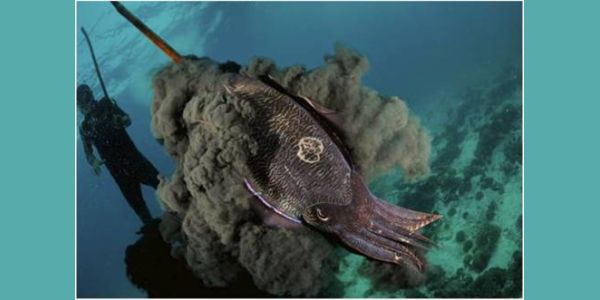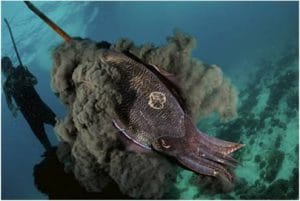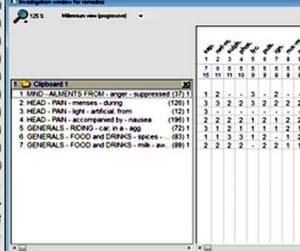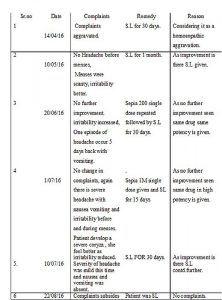Full Name: Sepia officinalis
Common name: Cuttle Fish
N.O. Cephalopoda
Preparation: Trituration of dried liquid contained in the ink bag
Proved by Dr. Samuel Hahnemann
Cuttlefish, nautilus and octopus are all members of the Cephalopoda group of the Sepiida family of mollusks. Cuttlefish, unlike most of the mollusks have an internal shell constructed from calcium carbonate (the same material that oyster and other shells are made of) which serves to give them skeletal rigidity but also as a buoyancy chamber with which they can control their depth, much like a submarine, by varying the liquid to gas ratio.
Originally cuttlefish caught in the Mediterranean Sea were used but now Australian (particularly Tasmanian) and New Zealand cuttlefish ink is also used. Cuttlefish prefer the bottom of shallow waters and are often washed ashore in severe storms. When threatened they extrude a brown/black ink or dye which is the substance used in this remedy.
Key Symptoms:
Irritability – Short temper. Low sex drive. Insecurity. Indifferent to sympathy.
Constitution:
- Hering gives these types: Suited to tall, slim women with narrow pelvis and lax fibres and musles. The women do not have natural curves.
- Persons of dark hair, rigid fibre, but mild and easy disposition. (Puls)
- Children who take cold readily when the weather changes.
- Pot bellied mothers, yellow saddle across nose, irritable, faint from least exertion, leuco-phlegmatic constitutions. Brown spots over abdomen.
CONDITIONS THAT BENEFIT FROM HOMEOPATHIC SEPIA
The following are some conditions for which Sepia has proven itself effective:
–Pre-Menstrual Syndrome (PMS): The Sepia woman may appear indifferent and/or irritable prior to her period, often taking her foul mood out on those closest to her (i.e., her partner or children). She will be fatigued, snappy, and chilly, and markedly worse for missing meals.
–Candida Albicans, also known as yeast infections: A person requiring Sepia will likely experience extreme vaginal itchiness, accompanied by a yellow or greenish discharge. Headaches and migraines: Sepia women tend towards migraines (worse before or during her period, during pregnancy, or before a thunderstorm) which start over the left eye and may extend to the nape of the neck.
–Complaints of Pregnancy: Women are often catapulted into a Sepia state on becoming pregnant, suffering from chloasma ( Homeopathy for Melasma, Chloasma ) (the “mask of pregnancy”), morning sickness (worse from the sight/smell of food), extreme weariness, and constipation. Those lacking emotional or physical support, experiencing headache, varicose veins, and constipation would likely benefit from Sepia, as are women who have a history of miscarriage around five and seven months of pregnancy. Expectant mothers who already have children are especially prone to a Sepia state.
–Post-Partum Complaints : Women who have a lack of interest in their families, irritability and lowered energy (sexual and otherwise), are all Sepia candidates.
– Menopause: Think of Sepia in all cases of hormonal imbalance. The menopause of Sepia is typified by hair loss, irritability, hot flashes, profuse night sweats, which leave the woman feeling overwhelmed and/or indifferent. Sepia women may have involuntary attacks of weeping, without knowing why.
– Circulatory Problems: Sepia women, with their innate desire to keep moving, are especially prone to stasis and stagnation. Apart from overall chilliness, and especially coldness of the extremities, they may likely suffer from varicose veins and bleeding, protruding hemorrhoids (often accompanied by constipation).
Sepia is one of the best remedies for women who have become worn out from all their toils of life. Many women’s health issues are addressed with this remedy.
A Case of Migraine Treated with Sepia
A 36 year old female, average build, arrived with complaint of severe headache since 10 years. There was severe pain in vertex and temple. Her sleep was disturbed from the headache. Her complaints were aggravated during travelling, by noise and in artificial light. She also had nausea during the headaches. Her headache increases before and during menses.
Her husband is manager of a company. The patient was born and brought up in a family where her father was very strict and irritable. Her mother was caring by nature. She had six siblings. She was good at study and scored 60% in 10th Std. After that she got married, her mother-in- law was very irritable. The patient used to get angry but never answered back. As husband was working in Pimpri, she came to stay at Pimpri, where she started a boutique shop. She took care of everything by herself. Whenever she got angry with her husband, she just stopped communicating.
Chief Complaint:
| Location | Sensation | Modalities | Accompaniments |
| HEAD
Whole head Temples Blood vessels Since 10 years F : 2-3 months/ once D : one day I: severe
GIT Stomach After headache Before one month |
Pain3
Heavy feeling
Pain2 Sleep: disturbed
Nausea Vomiting Drowsiness Feverish feeling
|
A/F Suppressed anger
< Traveling2 < Noise2 < Artificial light3
> Vomiting3
|
Appetite: decreased
Thirst: increased
|
Patient as a person:
Appearance: average build
Perspiration: scanty in axilla
Craving: spicy2
Aversion: Milk2
Menses < Headache3,
< Backache2
Obstetric h/o: G3P2
Abortion at ½ months
Morning sickness3: in both pregnancies in first trimester.
Mental state:
- Suppression of anger
- Irritable
- Egoistic
- Self centered
Physical Factors:
Motion sickness
Chilly
Past History and Family History:
Nothing significant
Physical Examination:
All systems: NAD
Clinical Diagnosis:
– Common migraine
Analysis and evaluation:
| A/F Suppressed anger | Metal emotional causation |
| < Traveling | Characteristic physical general aggravation |
| < Noise | Characteristic physical particular aggravation |
| < Artificial light | Characteristic physical particular aggravation |
| Appetite: decreased headache with | Physical general concomitant to particular |
| Thirst: increased headache with | Physical general concomitant to particular |
| > vomiting | Common physical particular amelioration |
| Craving: spicy | Physical general dispositional |
| Aversion: Milk | Physical general dispositional |
| Menses before < Headache, Backache | Characteristic physical general aggravation |
Repertorization:
Materia Medica Differentiation:
The remedies which emerged after Repertorization were Sep, Nat. Mur, Lyco and Ign. If we see the patient as a person who is egoistic, self centered irritable, chilly and who has headache which is < before menses, it created the image of Sepia.
- The case was repertorised with the Boenninghausen’s approach.
- A case like this that has the characteristic particular modality, physical general modality, physical general and concomitant favours the Boenninghausen approach.
Follow Up Summary:
Patient was given Sepia 200 single dose but headache did not improve. Subsequently a 1M potency single dose was given. After changing the potency the headache was relieved and she developed severe coryza for which she was put on SL. After one week she felt much better. All her complaints were resolved. This shows that when the remedy and potency is correct, homoeopathy can do wonders.








Thank you for this article and accompanying case Dr. Rajgurav. Nicely done.
What a neat case!
I love that you were sure enough to stick with Sepia and just went up.
Thank you for sharing.